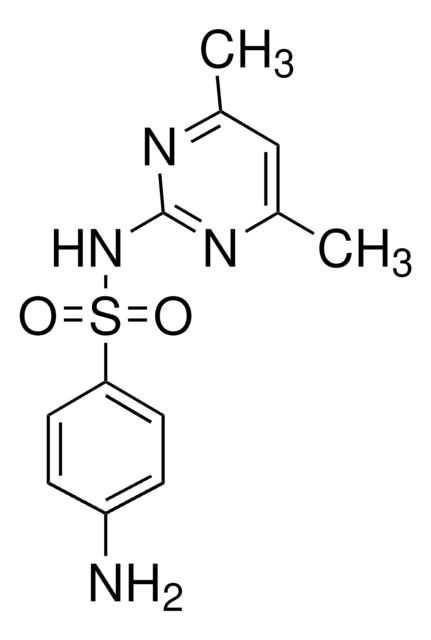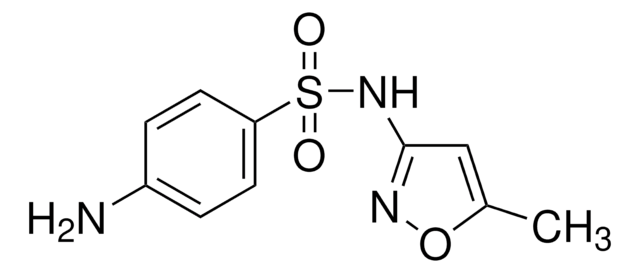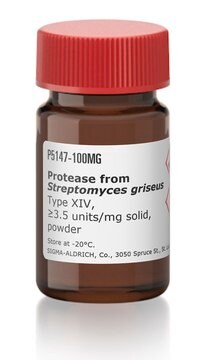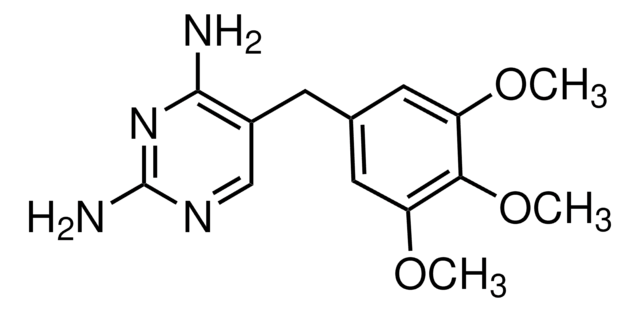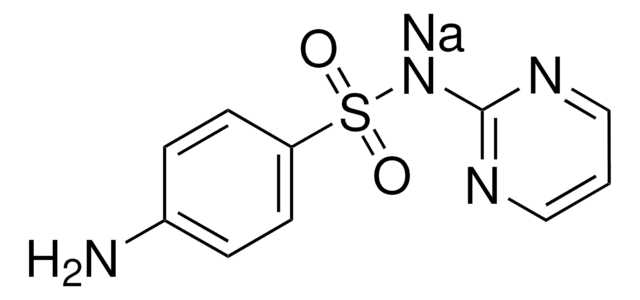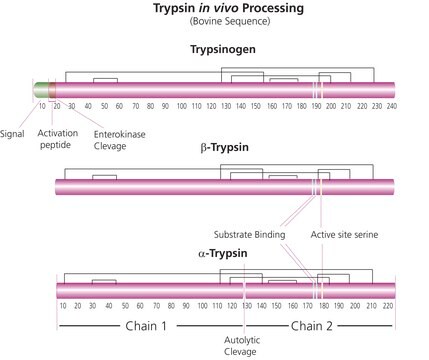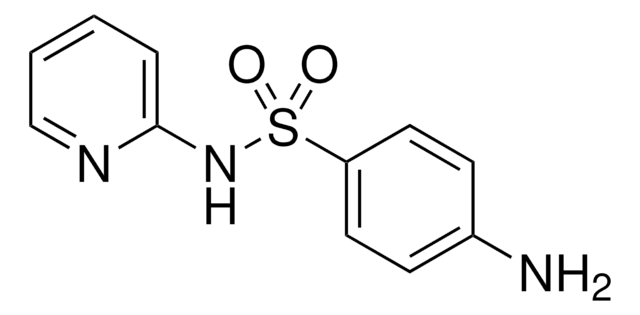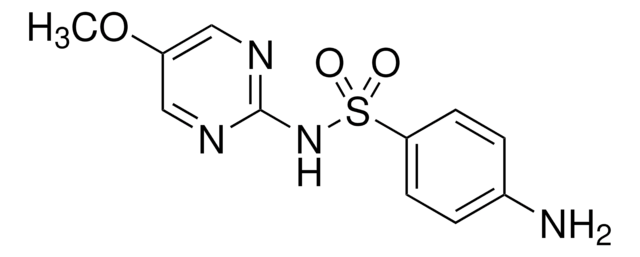S8626
Sulfadiazine
99.0-101.0%
Sinônimo(s):
4-Amino-N-(2-pyrimidinyl)benzenesulfonamide, N1-(Pyrimidin-2-yl)sulfanilamide
About This Item
Produtos recomendados
descrição
Solubility - Practically insoluble in water, slightly soluble in acetone, very slightly soluble in ethanol (96 per cent). It dissolves in solutions of alkali hydroxides and in dilute mineral acids.
Nível de qualidade
Ensaio
99.0-101.0%
Formulário
powder or crystals
cor
white to faint yellow, faint pink
pf
253 °C (dec.) (lit.)
solubilidade
96% ethanol: very slightly soluble
acetone: slightly soluble
water: practically insoluble
espectro de atividade do antibiótico
Gram-negative bacteria
Gram-positive bacteria
mycoplasma
Modo de ação
DNA synthesis | interferes
enzyme | inhibits
cadeia de caracteres SMILES
Nc1ccc(cc1)S(=O)(=O)Nc2ncccn2
InChI
1S/C10H10N4O2S/c11-8-2-4-9(5-3-8)17(15,16)14-10-12-6-1-7-13-10/h1-7H,11H2,(H,12,13,14)
chave InChI
SEEPANYCNGTZFQ-UHFFFAOYSA-N
Procurando produtos similares? Visita Guia de comparação de produtos
Descrição geral
Aplicação
Ações bioquímicas/fisiológicas
Outras notas
Palavra indicadora
Warning
Frases de perigo
Declarações de precaução
Classificações de perigo
Acute Tox. 4 Oral - Aquatic Chronic 2 - Repr. 2
Código de classe de armazenamento
11 - Combustible Solids
Classe de risco de água (WGK)
WGK 2
Equipamento de proteção individual
dust mask type N95 (US), Eyeshields, Faceshields, Gloves
Escolha uma das versões mais recentes:
Já possui este produto?
Encontre a documentação dos produtos que você adquiriu recentemente na biblioteca de documentos.
Os clientes também visualizaram
Nossa equipe de cientistas tem experiência em todas as áreas de pesquisa, incluindo Life Sciences, ciência de materiais, síntese química, cromatografia, química analítica e muitas outras.
Entre em contato com a assistência técnica